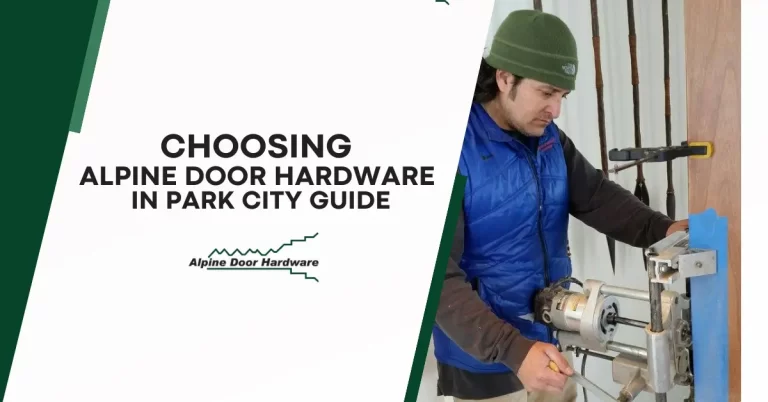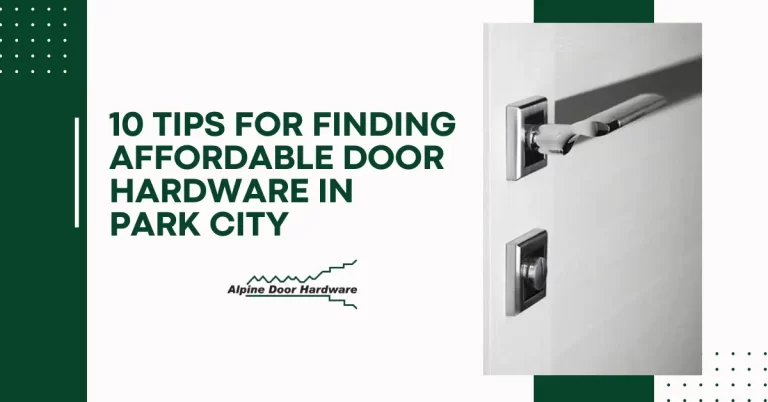Door closers are typically found in commercial buildings but can also be installed in residential properties. The best door closers generally decrease energy costs by ensuring that doors are always kept closed. This is particularly important in extreme climates where heating and cooling devices are constantly used.
There are numerous varieties of door closers available on the market, but they all serve the same purpose and are mounted similarly. With a few guidelines and crucial information about door closers, you can choose the best option for your needs.
What Is a Door Closer?
As the name suggests, a door closer is a device that keeps a door closed. This door hardware is basically an adjustable, spring-loaded mechanical arm that slowly closes the door after it has been opened. What it does is not only keep the door closed but keep the door from slamming.
While we mostly see door closers in commercial establishments and offices, they can also be used in homes.
Functions of a Door Closer
1. Ensures closure of fire doors.
The door closer ensures a door stays closed when not being used, which is particularly important with fire doors. Fire-rated doors with door closers allow you to evacuate a building safely while keeping smoke and flames trapped within the structure to prevent them from spreading further.
2. Prevents doors from slamming.
Door closers have dampers that prevent doors from slamming, avoiding unnecessary injuries and the irritating sound of a slamming door. Furthermore, if the door is located in a windy area, you wouldn’t have to worry about the door swinging uncontrollably.
3. Manages the doors’ open swing.
Most door closers include a backcheck feature. The backcheck stops doors from opening too quickly by delaying or even stopping the door at a specific point in the opening swing.
4. Enhances safety.
A closer door increases a property’s security since it firmly locks a door once a person has passed through it, preventing access to uninvited individuals from accessing your property.
Types of Door Closers
Surface-Mounted Door Closers
Surface-mounted door closers are the most common because they provide functions and options not seen in other types of door closers. There are four available types, including:
- the slide-track arm,
- the surface-mounted normal arm
- The surface-mounted parallel arm,
- And the top jamb arm.
Surface-mounted closers are often found on steel façade doors and are excellent for openings with moderate foot traffic.
Overhead Concealed Door Closers
Use overhead concealed door closers in locations with moderate to heavy foot activity. They are inserted and concealed within the door and frame headers of storefronts. With narrow, medium, or broad stile doors, you can install overhead concealed closers in either a centered or offset arm position.
Floor-Spring Door Closers
Floor-mounted door closers are the most durable option and are necessary for heavy doors or areas with high traffic. These high-performance closers are easily adjusted and work well with tall, broad, heavily insulated, or thick glass façade doors.
Factors To Consider When Choosing the Best Door Closer
If you’re thinking about installing a door closer on your property, here are some of the things you need to consider:
- Type of opening and location
- Interior or exterior door closer mounting
- The volume of door traffic
- Type of door
- Weight and size of the door
- Door swing
- Wind or building pressure
Door Closer Installation Process
Installing a door closer is not that complicated. Just follow the steps below:
- Step 1: Mark four holes in the door for the body of the door closer and two holes in the door frame for the arm of the door closer.
- Step 2: Drill starter holes in the door and door frame with the provided standard screws.
- Step 3: Attach the front arm and arm shoe assembly to the door frame using the screws with the door closer.
- Step 4: Install the door closer to the door using the provided screws. The speed adjustment valve must be located at the hinge’s outside edge.
- Step 5: Install the main arm perpendicular to the door on the top pinion shaft. Secure firmly with the included arm screw and washer combination.
- Step 6: Modify the length of the front arm so that it is perpendicular to the frame when assembled with the pre-loaded main arm. Use the supplied screw and washer to secure the front arm to the main arm.
- Step 7: Attach the pinion cover to the door closer’s shaft at its base.
- Step 8: Adjust the door’s closing speed.
How To Adjust a Door Closer
If you want to adjust your door closer, here’s an easy-to-follow guide:
1. Remove the cover first.
If the adjustment valves cannot be seen, the closer has a cover that must be removed. If the cover has fasteners, loosen them and pull them off. If there are no fasteners, the cover is held by tension and can be removed by simply pulling it off. There should now be visibility of the adjustment valves.
2. Close every valve.
To close the three hydraulic valves, turn them clockwise until they stop.
3. Reconfigure the backcheck.
Make 1.25 to 1.5 counterclockwise turns and open the door to ensure a stable, firm halt. At around 75 degrees, the door should begin to slow down so it does not slam against the surface behind it.
4. Adjust the sweep speed.
Make 1.5 to 2 counterclockwise turns to modify the door’s closing speed. Turning the valve counterclockwise will slow the rate of closure.
5. Modify the latching speed.
To get the appropriate latching speed, make 1.5 to 2 rotations counterclockwise. The correct latch speed depends on the given circumstances. If it is an exterior door, consider raising the latch speed counterclockwise, so it closes more quickly. If the door is an office door, you may wish to slow it down counterclockwise, so it does not slam.
6. Assess the door.
Open and close the door several times to evaluate the adjustments and make any necessary modifications. Remember to make modifications gradually.
Conclusion
A door closer’s functionality is not limited to simply closing the door; a quality door closer will also control the door during the opening and closing to minimize damage and harm caused by abuse, wind, or other factors. With so many types and options available, it can take time to determine which door-closer to choose. To make your final decision, consider the information supplied here and use it to guide to help you to make the right decision.
For all your door hardware needs, visit Alpine Door Hardware.
As you can see, there are numerous factors to consider when picking the right door closer for your property. If you need professional advice or require confirmation that you are ordering the proper door closer, visit or call Alpine Door Hardware, the top Park City door hardware store. Our years of expertise will give you peace of mind by knowing you have chosen the proper hardware to protect your property.




